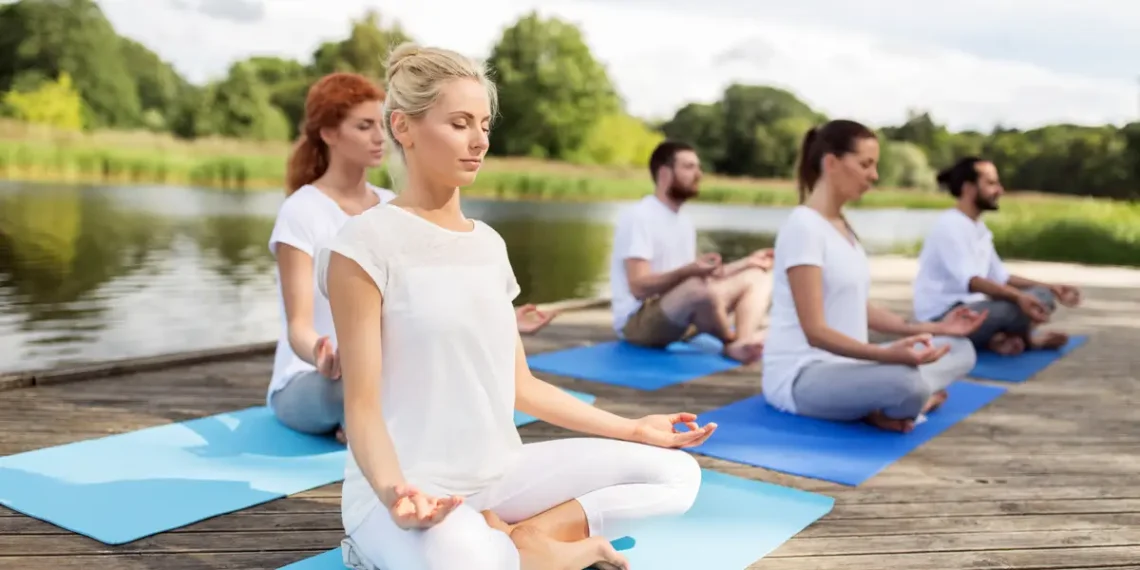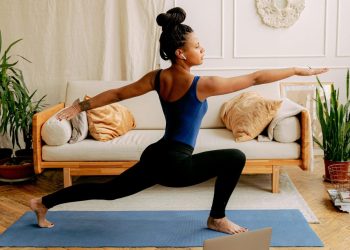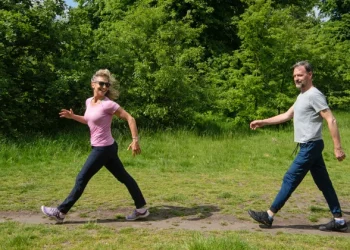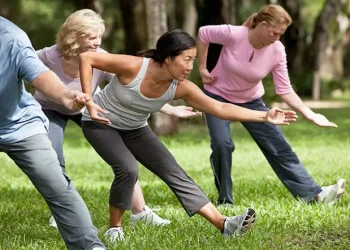Tai Chi walking, often called “walking meditation” or “cloud walking,” represents one of the most accessible yet profound practices within the Tai Chi tradition. Unlike stationary Tai Chi forms, these walking exercises combine the flowing principles of Tai Chi with natural locomotion, creating a bridge between formal practice and everyday movement. This guide will equip you with specific exercises, progressive training methods, and practical frameworks for building a sustainable practice.
Understanding Tai Chi Walking
Tai Chi walking exercises emphasize slow, deliberate movement coordinated with breath and mental focus. The practice cultivates balance, proprioception, and the smooth transfer of weight that characterizes all Tai Chi movements. Rather than viewing walking as merely transportation, practitioners transform it into a vehicle for developing body awareness, mental clarity, and energetic cultivation.
The fundamental principle underlying all Tai Chi walking is the concept of “substantial and insubstantial” – the clear distinction between weighted and unweighted legs. This seemingly simple idea requires significant practice to embody fully. Each step becomes an opportunity to refine your understanding of balance, root, and transition.
Foundational Posture and Principles
Before exploring specific exercises, establish the correct postural foundation. Stand with feet parallel and shoulder-width apart. Soften your knees slightly without collapsing. Imagine a string gently lifting the crown of your head toward the sky while your tailbone releases downward. Your shoulders should settle naturally, arms hanging loosely by your sides. The tongue rests gently against the upper palate, and your gaze extends forward at eye level with a soft focus.
Throughout all walking exercises, maintain these principles: breathe naturally through your nose, keep your spine vertically aligned, move from your center (the lower abdomen or “dantian”), and never lock your joints. Your movements should flow continuously without abrupt starts or stops.
Core Exercise One: Basic Tai Chi Walk
The basic Tai Chi walk forms the foundation for all other variations. Begin in your standing posture. Slowly shift your weight completely onto your right leg, feeling it become “substantial” while your left leg becomes “insubstantial” or empty. This weight shift should take three to five seconds.
Once fully weighted on your right leg, slowly peel your left foot from the ground, heel first, allowing your toes to be the last point of contact. Draw your left knee upward until your thigh is roughly parallel to the ground, with your foot relaxed and toes pointing downward naturally. Hold this position for one breath.
Extend your left leg forward, leading with the heel. Touch the ground heel-first with a completely empty leg – no weight transfer yet. Your heel makes contact like a feather landing. Gradually roll through your foot from heel to midfoot to toes as you slowly transfer your weight forward onto the left leg. This weight transfer should mirror the speed of your initial weight shift, taking three to five seconds.
As your left leg becomes substantial, your right leg simultaneously becomes insubstantial. The transition should be smooth and continuous, with a clear moment when weight distribution reaches fifty-fifty before continuing the forward shift.
Continue this process, alternating legs. Practice for five to ten minutes initially, focusing on smoothness rather than distance covered. You might traverse only ten feet in several minutes, and that’s perfectly appropriate.
Core Exercise Two: Tai Chi Walking with Arm Coordination
Once comfortable with basic leg work, integrate arm movements. This exercise develops coordination between upper and lower body while maintaining balance and flow.
Begin as before, but as you shift weight onto your right leg and lift your left knee, simultaneously raise both arms forward to shoulder height, palms facing downward. Your arms should float upward as though moving through water, reaching full extension just as your left knee reaches its highest point.
As you step forward and transfer weight onto your left leg, press both palms downward and slightly backward, returning them to your sides. The downward press should complete exactly as your weight transfer finishes. This creates a wave-like coordination where rising and falling movements flow through your entire body.
The arm movements should originate from your center, not from isolated shoulder action. Imagine your dantian (lower abdomen) initiating all movement, with your limbs following naturally. Practice this variation for five to ten minutes, maintaining awareness of breath, balance, and coordination.
Core Exercise Three: Single-Whip Walking
This variation introduces lateral awareness and rotational elements. From your standing posture, shift weight onto your right leg. As you lift your left knee, extend your right arm to the side at shoulder height with fingers forming a loose “beak” (thumb touching the four fingers together, wrist flexed). Simultaneously, your left arm curves across your body, palm facing inward near your right shoulder.
Step forward with your left foot while rotating your torso slightly leftward. As weight transfers onto your left leg, your left arm extends forward and slightly left, palm facing outward at shoulder height, while your right arm remains extended to the right. Your body forms an opening, expansive posture.
Continue walking forward, alternating sides. Each step involves this rotation and opening, developing lateral mobility and spatial awareness. This exercise particularly enhances balance by challenging your stability during rotational movements. Practice for five to seven minutes per session.
Core Exercise Four: Backward Walking
Walking backward in Tai Chi style dramatically improves balance, proprioception, and ankle strength. From standing posture, shift weight completely onto your left leg. Slowly reach your right leg backward, touching the ball of your foot to the ground first, then carefully placing the entire foot down while keeping it empty.
Gradually transfer your weight backward onto the right leg, simultaneously allowing your left leg to become insubstantial. The weight shift flows from front to back smoothly and continuously. Once fully weighted on your right leg, peel your left foot from the ground, toe first, heel last, and repeat the process.
Backward walking requires heightened awareness since you cannot see where you’re stepping. Begin in a clear, obstacle-free space. Initially practice for only two to three minutes, gradually building to five minutes as your confidence and skill develop.
Variations for Different Levels
Beginner Variations: Reduce the height of your lifted knee, keeping your foot closer to the ground. Shorten your steps significantly. Practice near a wall or stable surface you can touch if needed for balance. Focus solely on weight shifting before adding arm movements.
Intermediate Variations: Increase the time spent on one leg between steps, holding the lifted knee position for two to three breaths. Experiment with different arm patterns, such as “pushing hands” movements or circular motions. Practice on gently sloping terrain to challenge your balance differently.
Advanced Variations: Integrate complex arm patterns that change with each step. Practice with eyes closed for short distances to heighten proprioceptive awareness. Combine forward and backward walking in continuous sequences. Walk in curved or circular paths while maintaining proper form. Coordinate breath patterns with steps, such as inhaling during weight shift and exhaling during stepping.
Progression Sequence
A thoughtful progression ensures steady improvement without overwhelm. Follow this twelve-week sequence as a general guide, adjusting based on your individual progress.
Weeks 1-2: Master basic weight shifting while standing in place. Practice the basic Tai Chi walk for five minutes daily, focusing exclusively on leg movements and balance.
Weeks 3-4: Extend basic walking practice to ten minutes. Introduce arm coordination for the final three minutes of each session.
Weeks 5-6: Practice fully coordinated walking (legs and arms) for ten minutes. Add two minutes of backward walking at the end of each session.
Weeks 7-8: Incorporate Single-Whip walking for five minutes mid-session. Increase backward walking to three to four minutes.
Weeks 9-10: Create flowing sequences that transition between different walking variations. Practice for fifteen to twenty minutes total.
Weeks 11-12: Refine all variations, emphasizing smoothness and mindful awareness. Experiment with environmental challenges like gentle slopes or textured surfaces.
Structuring Practice Sessions
A well-structured practice session maximizes benefits while preventing fatigue or injury. Here’s a comprehensive framework:
Opening (5 minutes): Begin with standing meditation in your foundational posture. Perform gentle neck rotations, shoulder circles, and hip rotations to warm your joints. Practice weight shifting in place, moving your center of gravity from side to side and forward to back without stepping.
Main Practice (15-25 minutes): Start with basic Tai Chi walking for five minutes to establish quality movement patterns. Transition to your chosen variation for the day, practicing for ten to fifteen minutes. If working on multiple variations, allocate five to seven minutes to each. Conclude main practice with three to five minutes of backward walking.
Integration (5 minutes): Return to normal walking speed briefly, maintaining awareness of the principles you’ve practiced. Notice how your regular walking might have changed. Finish with two minutes of standing meditation, integrating your experience.
Frequency and Duration: Practice four to six days per week for optimal progress. Daily practice yields the best results, but rest days prevent burnout and allow integration. Each session should last twenty-five to thirty-five minutes total.
Essential Practice Tips
Environment matters significantly. Choose flat, even surfaces initially, preferably with some cushioning like grass or rubber tracks rather than concrete. Ensure adequate space to walk ten to fifteen paces in your chosen direction. Natural settings enhance the meditative quality of practice.
Mental focus should remain gentle yet steady. Rather than forcing concentration, allow your awareness to settle naturally into your body and movement. When your mind wanders – and it will – simply notice and return attention to the sensations of walking.
Common mistakes include rushing through movements, neglecting complete weight transfers, holding breath, and tensing shoulders or neck. Address these by periodically pausing to check your form. Sometimes slower is better; if balance becomes difficult, reduce your speed further.
Conclusion
Tai Chi walking exercises offer a practical, accessible entry point into embodied mindfulness. Through consistent practice of these specific exercises and variations, you develop not only improved balance and coordination but also a deeper connection between mind, body, and breath. The progression sequence provides structure while remaining flexible enough to accommodate individual needs. Remember that mastery comes through patient, regular practice rather than forceful effort. Let each step become an opportunity for presence, each weight shift a lesson in balance, and each session a moving meditation that enriches both your Tai Chi practice and daily life.






